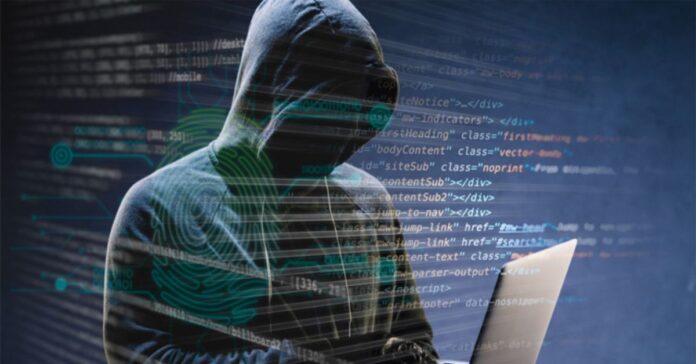In a concerning wave of cyber fraud, Indians lost approximately ₹120.3 crore to ‘digital arrest’ scams in the first quarter of 2024 alone, as per government data. This revelation follows Prime Minister Narendra Modi’s warning during his monthly ‘Mann Ki Baat’ address on October 27, where he discussed the rising tide of cyber crimes. The scam, a psychological trap posing as a legal emergency, has ensnared thousands of Indians, leading authorities to intensify public awareness efforts.
Cyber Crime Surge: Alarming Figures and Rising Scams
The National Cybercrime Reporting Portal (NCRP) recorded a staggering 0.74 million cyber complaints between January and April 2024, following 1.5 million complaints in 2023 and 0.96 million in 2022—a significant jump from the 0.45 million complaints in 2021. This sharp upward trend reveals an escalating cyber crime crisis. Recent reports from the Indian Cybercrime Coordination Centre (I4C) detail that, apart from digital arrest scams, Indians suffered losses of ₹1,420.48 crore through trading scams, ₹222.58 crore in investment frauds, and ₹13.23 crore in romance scams. These figures underscore the vulnerability of digital transactions and the urgency of combating cyber crimes.
“These scams target individuals by using fear tactics, often posing as law enforcement or government officials to pressurize citizens into compliance,” said Akshat Khetan, founder of AU Corporate Advisory & Legal Services. “To protect against these deceptive practices, every citizen should know their fundamental legal rights: no legitimate authority will demand immediate payments or personal information under threat.”

Unmasking Digital Arrest Fraud: Manipulation through Fear and Intimidation
Digital arrest scams have grown increasingly sophisticated, exploiting citizens’ trust in law enforcement and their fear of criminal charges. Scammers, often posing as officials from agencies like the CBI, Narcotics Bureau, or tax authorities, contact individuals via video calls, demanding payments to settle alleged charges. The victims, under what scammers term a ‘digital arrest,’ are forced to remain visible on camera until they comply with the demands.
Frequently, these criminals establish convincing visuals—police-station backgrounds, uniforms, and official-looking documents—on video platforms to intensify pressure on the victim. They accuse the target of receiving illegal items or being linked to unlawful activities, sometimes even fabricating scenarios involving close relatives or children to further manipulate the victims. Deepfake videos, fake warrants, and altered identification are also deployed to reinforce the fraud’s credibility.
Modi emphasized the dangers of digital arrest fraud by sharing an audio clip in his Mann Ki Baat broadcast, in which a scammer impersonated a police officer and instructed a victim to reveal their Aadhaar number to block a mobile connection. “This audio is not just for information, this is not an entertainment audio… It has emerged with a deep concern,” Modi remarked. His statement reflects the scale of the issue, cautioning citizens against these deceptive practices.

Criticism on Government Response: Is Enough Being Done?
Despite public warnings and increased cyber crime awareness campaigns, critics argue that the government’s response has been inadequate, lacking stringent policies and enforcement mechanisms to effectively address this new form of cyber fraud. Many scammers operate from outside India—specifically Myanmar, Laos, and Cambodia—creating additional hurdles for Indian authorities attempting to track and prosecute the perpetrators. Although the I4C, under the Ministry of Home Affairs, monitors cyber crime closely, there are calls for stronger legal action, cross-border cooperation, and quicker responses to incidents.
“There is an urgent need for stricter cyber laws and more punitive measures for these crimes,” Khetan added, emphasizing that public education remains the first line of defense. “Citizens should remember that they are not obligated to provide sensitive details without verification and must always take time to confirm the legitimacy of any interaction.” For instance, preserving texts, calls, and emails as evidence can be pivotal for legal recourse. Reporting protocols on the NCRP, police helplines, and banking hotlines further aid in protecting against these frauds, while public awareness campaigns can empower citizens to detect red flags, such as unsolicited calls requesting personal data under threat.
Addressing Cyber Security Gaps: Steps Forward
The escalating figures and increased sophistication of these scams have highlighted the urgent need for a comprehensive cyber security strategy. Enhanced awareness, law enforcement training, and international partnerships are essential to curb these scams’ expansion across borders. For citizens, vigilance and immediate reporting remain essential, yet there is a clear call for government initiatives to support and protect the public from these threats, with stricter cyber laws and enhanced infrastructure to detect and address cyber fraud.
In the digital era, where everyday transactions are increasingly online, cyber security is a shared responsibility. The government, along with the public, must act decisively to prevent further losses and protect citizens from cyber threats that could compromise their financial stability and personal safety.

